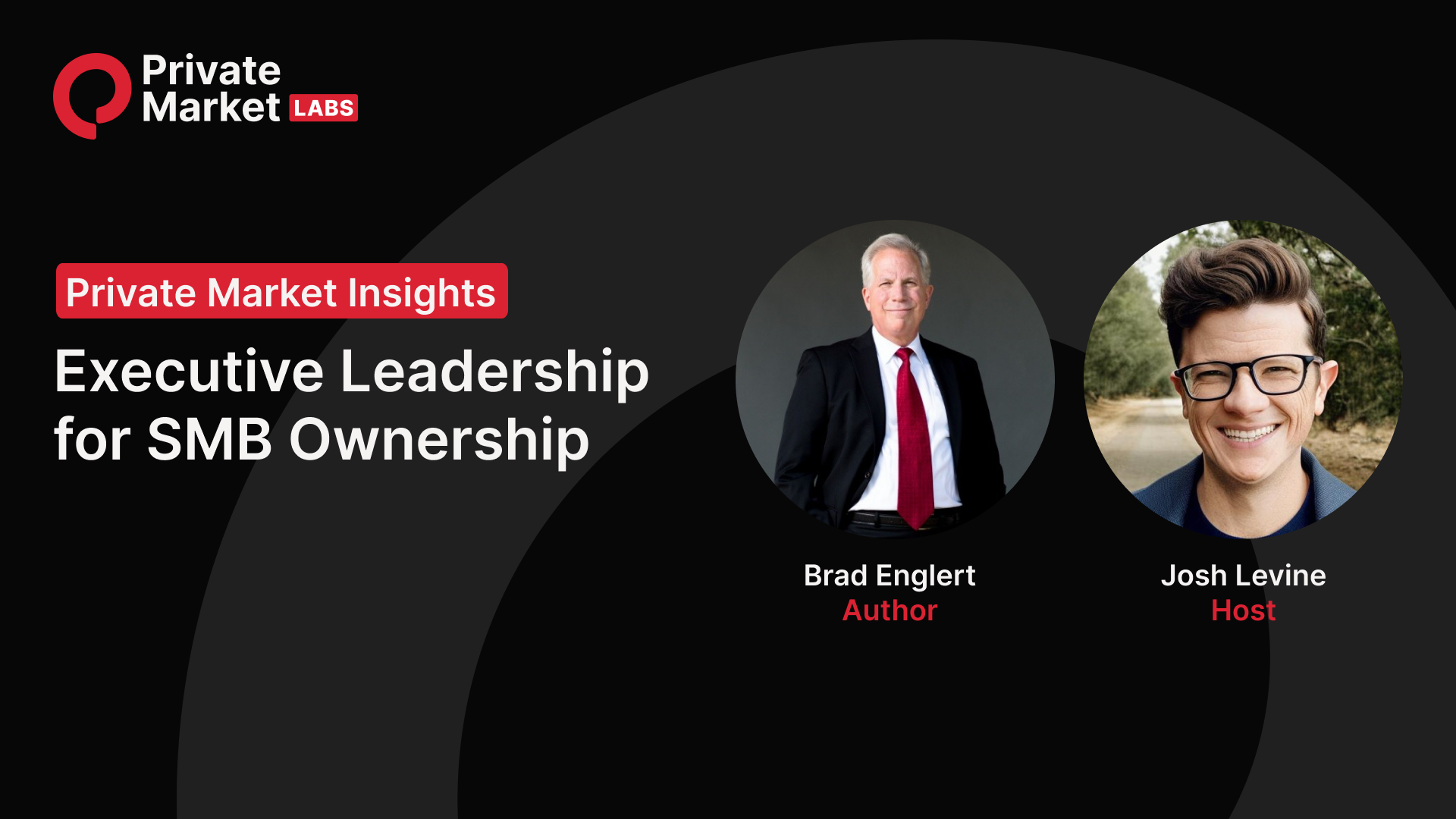In our 28th episode of Private Market Insights, we talk with Brad Englert, a top executive leadership expert, esteemed technologist, and author of “Spheres of Influence”, to share his expertise on critical aspects of leadership and management in business acquisitions. The discussion centers on building robust professional relationships and mastering effective communication strategies. Brad explores the challenges of assuming leadership roles in established organizations and strategically managing key customer relationships during transitions.
The conversation highlights Brad’s blueprint for managing business relationships, distinguishing between the internal sphere—direct reports and executive leaders—and the external sphere, which includes customers, peers, and strategic vendors. He outlines three fundamental principles for nurturing these relationships: understanding individual goals and aspirations, managing expectations accurately, and fostering a genuine interest in others’ success. This episode offers insights for those stepping into leadership roles, especially post-acquisition, on how to effectively steer organizations through transformative periods and maintain continuity in key business relationships.
For more insights on topics such as handling key customer relationships post-acquisition, managing vendors and strategic partners, and the impact of remote work on external relationship building, watch the full episode:
Don’t Assume People are Mind Readers
Brad emphasizes clear communication as a fundamental aspect of effective leadership, advising leaders to explicitly articulate their goals and expectations. This clarity prevents misunderstandings and aligns team objectives. He suggests that new leaders, particularly after an acquisition, conduct a “listening tour” to engage with stakeholders and establish trust. Simple, direct conversations about what is working well and what could improve are essential for smooth transitions and fostering an open communication culture within established organizations.
Engage in Power Mapping
Brad highlights the importance of “power mapping,” a technique that helps leaders identify not only the formal hierarchy within an organization but also the influential individuals who may not have senior titles. Recognizing key influencers, such as long-tenured employees with extensive organizational knowledge, allows leaders to navigate and influence the company’s culture and generate buy-in for key initiatives. Power mapping is crucial for understanding the true dynamics of an organization, especially during transitions or acquisitions.
Assess Organizational Health Through Mission and Vision
Brad notes that successful organizations, like Starbucks and Microsoft, typically have clear, concise mission statements and defined visions for the future. In contrast, “wounded” organizations often lack these elements and react to crises rather than strategically planning. He emphasizes examining whether an organization has a well-articulated mission and vision as the first step in diagnosing its health. This approach helps in steering an organization towards a healthier, more strategic path by realigning and reaffirming the team around a shared foundation.
Redefine “Family” in Your Business
Brad discusses how companies using the cliche, “we’re like a family”, can actually contribute to overwork and burnout among employees. He prefers to use a different definition of “family” to create a healthier work environment. Even in a competitive IT market, he offered employees a balance between work and personal life, ensuring that personal responsibilities like attending a child’s school play or a doctor’s appointment take precedence. He also stressed the importance of leaders modeling this behavior. This approach can help employees manage their personal lives and be more productive and engaged during work hours.
Look at Performance as the Reflection of the Structure
Brad points out that in an acquisition “top performers,” as identified by departing management teams, might not truly align with the organization’s mission and vision. These individuals may excel within the existing structure, but this does not necessarily mean they are the best fit for the organization’s future direction. He emphasizes examining the organizational structure first to understand performance dynamics. This way, leaders can better understand who genuinely contributes to the organization’s goals.
Don’t Get Intimidated by Strategic Planning
Brad asserts that strategic planning is less complex than it seems and highlights the importance of transparency in the process. He advises new leaders to initiate strategic planning using established frameworks like SWOT analysis to assess strengths, weaknesses, opportunities, and threats. Gathering inputs from diverse stakeholders helps identify the organization’s true priorities, which often naturally “bubble up” during the process. This approach underlines that strategic planning isn’t about having all the answers upfront but about setting a direction and adapting as answers emerge.
Cultivate Humility in Leadership
Brad advises leaders to foster a culture where problems are addressed directly rather than escalated unnecessarily. He encourages his direct reports to communicate directly with each other about issues rather than relying on him to intervene. This approach reduces inefficiencies like triangulation—where individuals discuss problems about someone without involving them directly—and discourages gossip, promoting straightforward, responsible handling of interpersonal challenges within the organization.

